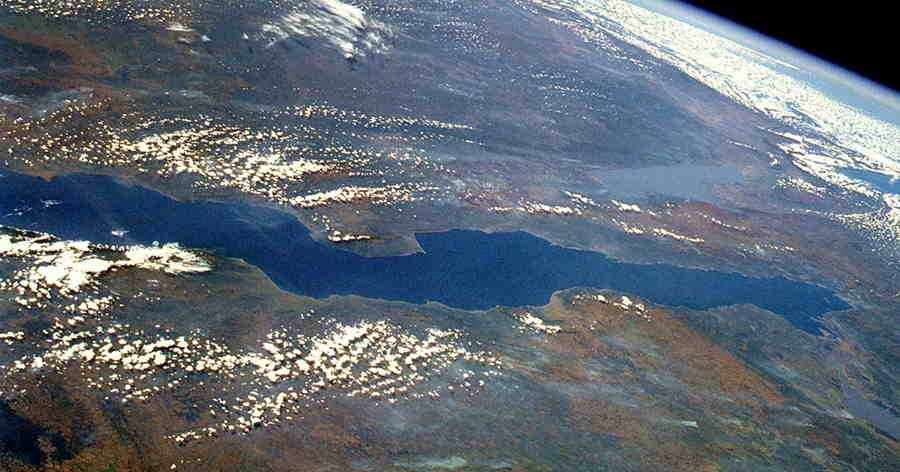
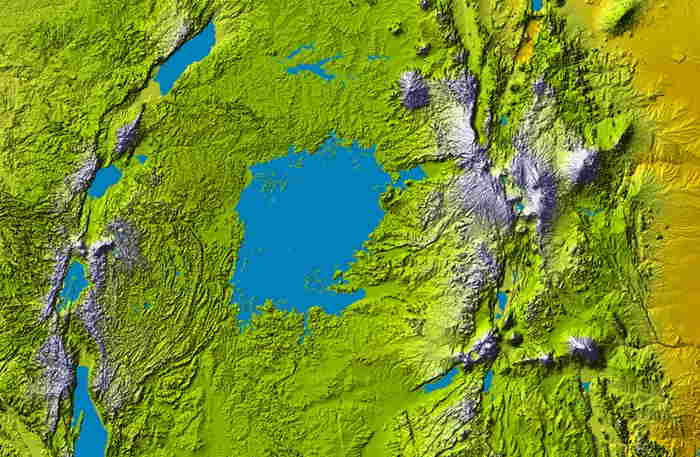
Lake Victoria is the largest lake in Africa and the second largest freshwater lake in the world. It is the source of the Nile River and is shared among three countries: Uganda, Kenya, and Tanzania. The lake has an area of 59947 square km and a maximum depth of 81 meters. It is the world’s largest tropical lake and is home to over 30 million people in the surrounding countries. The lake is known for its abundant fish species, which provide food and livelihoods to many people in the region. The lake has an average temperature of 24°C and supports a wide variety of plants and animals. It is a popular destination for tourists who come to visit the many islands, beaches, and wetlands. The lake is also an important source of hydroelectric power and serves as an important transportation route for goods and services.

Lake Tanganyika is one of the largest freshwater lakes in the world, located in the African Great Lakes region between Tanzania, the Democratic Republic of the Congo, Burundi, and Zambia. It is the second oldest lake in the world, estimated to be over 12 million years old, and the second deepest, at a maximum depth of 1,470 meters. Spanning a total surface area of 32,893 square kilometers, Lake Tanganyika is the longest freshwater lake in the world, stretching up to 673 km in length, and averaging 50 km in width. The lake is an important source of hydroelectricity, with the Kigoma-Ujiji-Kigoma hydroelectric power plant providing electricity to Burundi, the Democratic Republic of the Congo, and Tanzania. Lake Tanganyika is also an important source of fresh water for the four countries, with the lake providing a large amount of water for drinking, irrigation, and many other domestic and industrial uses.
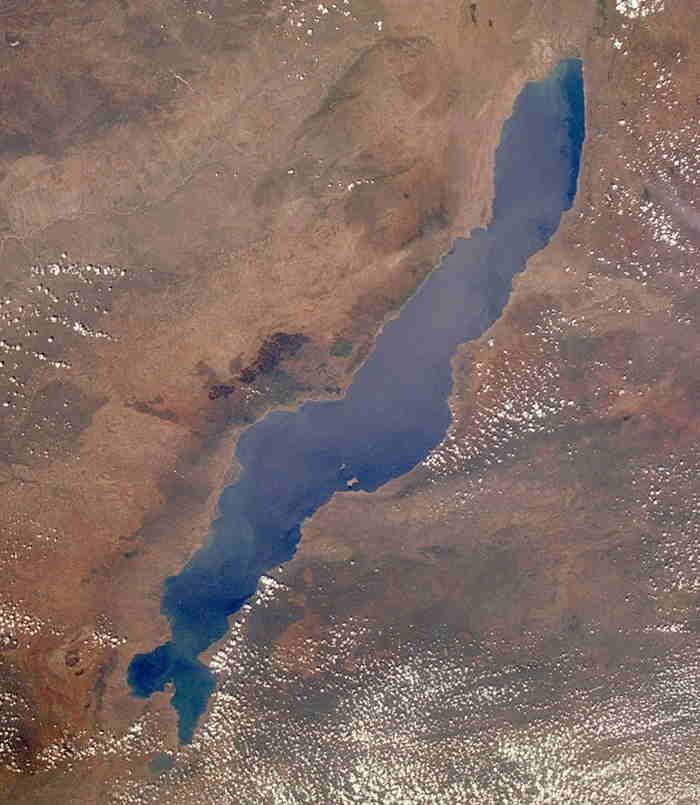
Lake Malawi, also known as Lake Nyasa, is the third largest lake in Africa. It is located along the border of Mozambique and Tanzania and is home to a diverse range of fish, birds, and other wildlife. The lake has a surface area of approximately 29,600 square kilometers. The lake is deep and clear, with depths up to 700 meters in some areas. The lake is also home to hundreds of species of fish, some of which are endemic to the lake. The colorful cichlid fish in the lake are particularly popular among anglers. The lake is also home to many small islands, most of which are uninhabited. There are two main islands, Likoma Island and Chisumulu Island. Chisumulu Island is particularly renowned for its pristine beaches and coral reefs. The lake is also home to a number of national parks and reserves, including the Lake Malawi National Park and the Likoma Island Nature Reserve.

Lake Turkana, located in the northern region of Kenya, is the largest permanent desert lake in the world. Spanning over 6,405 square kilometers, the lake is the fourth largest in Africa and the world’s largest alkaline lake. It is also known as the Jade Sea due to its striking turquoise color, which is a result of the high abundance of minerals found in the lake. The lake is fed by four main rivers, the Omo, the Gibe, the Elkere, and the Turkwel. It has an average depth of 30 meters and a maximum depth of 109 meters, making it the deepest lake in the East African Rift Valley.

Lake Albert is a lake located on the border of Uganda and the Democratic Republic of the Congo. It is the fifth largest lake in Africa, after Lakes Victoria, Tanganyika, and Malawi, and one of the African Great Lakes. The lake has an area of about 5590 square kilometers. The lake is situated within the Albertine Rift, the western branch of the East African Rift, which splits the African Plate along the length of Africa. Lake Albert is fed by several rivers, including the Semliki River, which flows in from the Democratic Republic of the Congo, and the Victoria Nile, which flows in from Lake Victoria.

Lake Mweru is a large freshwater lake on the border between Zambia and the Democratic Republic of the Congo (DRC). It is located in the Mweru Wantipa National Park in the Northern Province of Zambia and is part of a larger system of lakes and wetlands that are home to a variety of wildlife. Lake Mweru has a maximum length of 131 kilometers and maximum width of 56 kilometers. The lake is fed by several rivers, including the Kalungwishi, Mweru, Luapula, and Luvua rivers, which all originate in the DRC. The lake has a surface area of 5120 square kilometers.
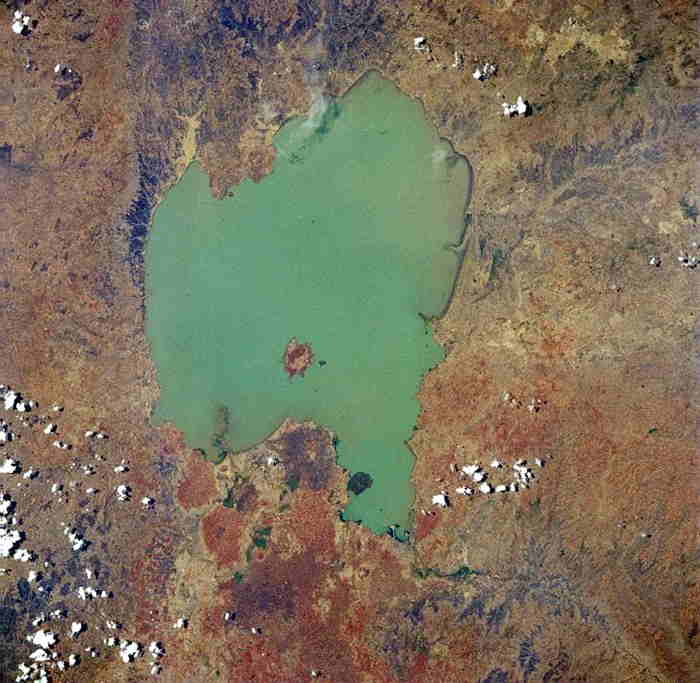
Lake Tana is the largest lake in Ethiopia and is located in the northwest part of the country, in the Amhara Region. It covers an area of 3,200 square kilometers. Lake Tana supplies about 40 percent of the total water resources of Ethiopia, and it is the source of the Blue Nile River. The lake is fed by three rivers, the Lesser Abay, the Reb, and the Gumara. There are 37 islands on the lake, some of which are home to numerous monasteries and churches. The largest island is called Dek Island and it is home to the Ura Kidane Mehret Monastery, which is a popular tourist destination.
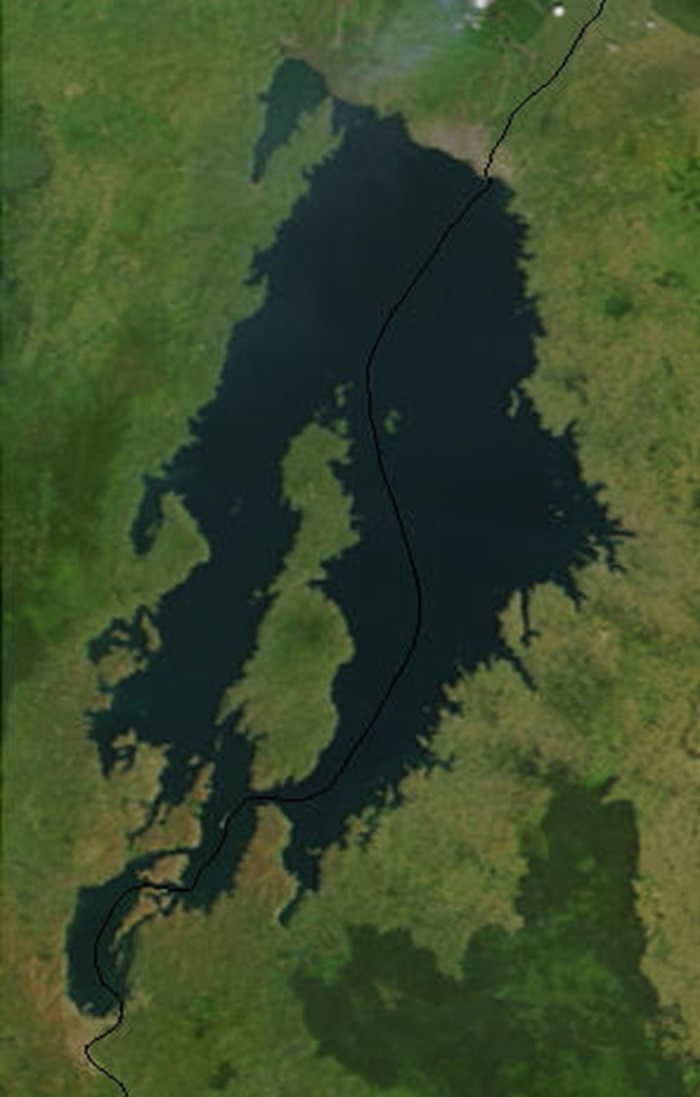
Lake Kivu is an African Great Lake that straddles the borders of Rwanda and the Democratic Republic of the Congo (DRC). The lake covers an area of approximately 2,700 square kilometers, making it Rwanda’s largest lake and the DRC’s third-largest lake. Lake Kivu is one of the deepest lakes in the world and has an average depth of 475 meters. It is also the second-most voluminous lake in Africa, with an estimated total volume of 8,500 cubic kilometers. The lake is surrounded by mountains, including the Virunga Mountains to the east and the Rwenzori Mountains to the west. The lake is fed by a number of rivers and streams, including the Ruzizi, which flows into the lake from the DRC. The lake is also fed by several other streams, including the Nyabarongo, which originates in Rwanda, and the Rukarara, which originates in Burundi.
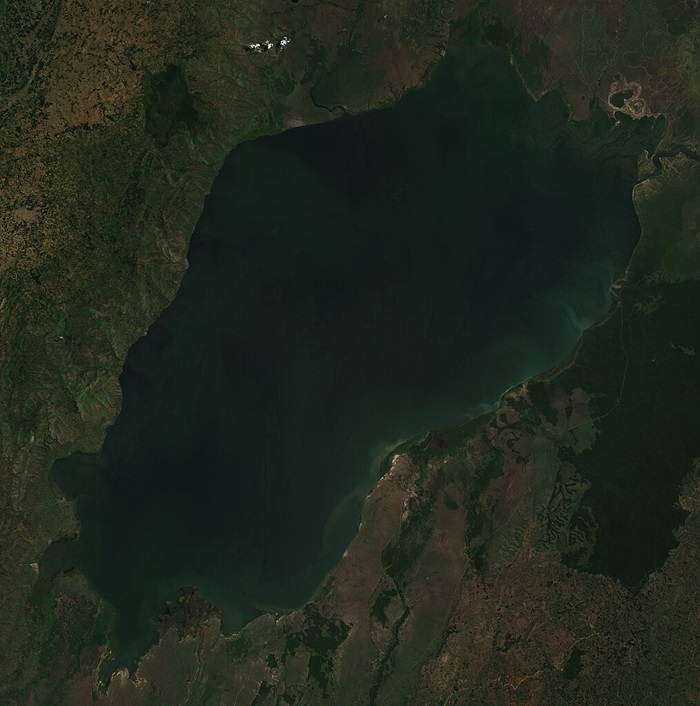
Lake Edward is a lake located in the western part of Uganda, on the border between the Democratic Republic of Congo and Uganda. It is the smallest of the African Great Lakes, with a surface area of about 2325 square kilometers. The lake is elongated, measuring about 77 kilometers long and 40 kilometers wide. The lake has a maximum depth of about 112 meters and an average depth of 17 meters. The lake is supplied by several rivers, including the Rutshuru River, which is the lake's main source. The lake is also fed by the Ishango River and the Ishasha River, both of which originate in the Virunga Mountains in the Democratic Republic of Congo. The lake has several islands, the largest of which is Bufuka Island.
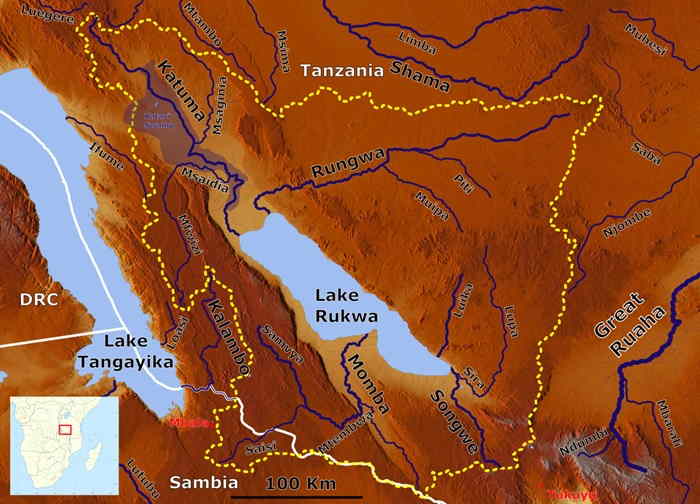
Lake Rukwa is a large and shallow lake located in the western part of Tanzania. It is the third largest lake in the country and covers a total area of approximately 133500 square kilometers. The lake is fed by the Great Ruaha River and is the source of the Luiche River. It is a permanent body of water and is characterized by its wide and shallow basin. The western shore of Lake Rukwa is populated by numerous fishing villages and small towns, while the eastern shore is sparsely populated by pastoralists. The lake is an important source of food and livelihood for the local population as it provides a rich source of fish. The lake is also an important source of water for irrigation and other activities. The lake itself is generally shallow, with an average depth of about 10m.